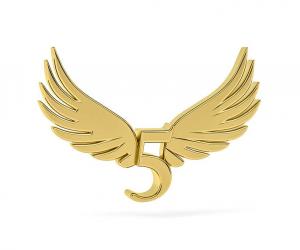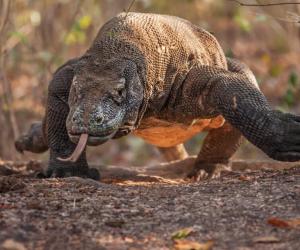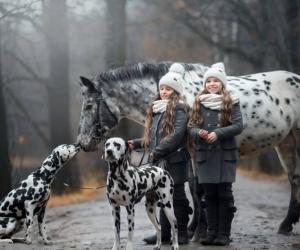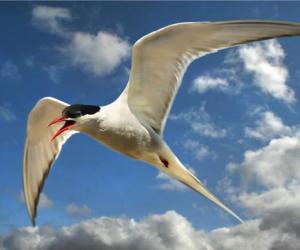The Complete List of 57 African Animals With Horns
Africa is known for its diverse wildlife, and some of the most striking are the animals with horns. These horns are more than just decorations; they tell a story of survival, defense, and nature’s artistry. From the long, curved horns of antelopes to the sturdy ones of buffaloes, each has its own purpose and beauty.
In this article, we’ll introduce you to various African animals that proudly carry horns. While we will list 57 of these animals, we’ll highlight just 12 of them.
1. Gemsbok (Oryx gazella)
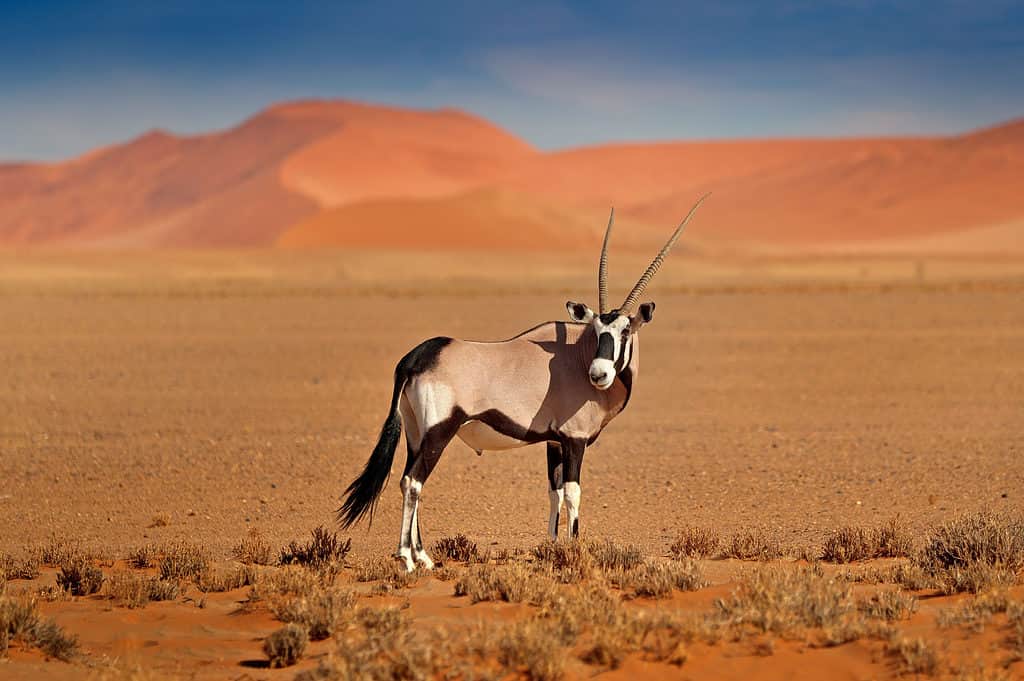
©Ondrej Prosicky/Shutterstock.com
First on our list of African animals with horns is the gemsbok, which holds the title of being the largest species within the Oryx genus.
Gemsbok have an incredibly robust physique and long tails resembling a horse. Their coat predominantly showcases a light brown to gray color, with darker accents on the face and belly. The regions around their eyes and legs exhibit a bright white color, creating an illusion of them wearing masks and socks.
Standing at an average height of about 4 feet at the shoulder, gemsbok is primarily spotted in the arid and semi-arid bushlands of southwestern Africa.
Being herbivores, gemsbok feed on grasses, thorny shrubs, roots, and tubers. They also eat wild tsamma melons and cucumbers to supplement their water needs in harsh desert conditions.
One of the most sought-after features of the gemsbok is their magnificent horns, which average around 33 inches in length. From afar, it’s challenging to distinguish between males and females based solely on their horns, leading to a common scenario where hunters mistakenly identify females as males each year. However, upon closer inspection, it’s worth noting that males possess slightly thicker horns with broader bases.
2. Greater Kudu (Tragelaphus strepsiceros)
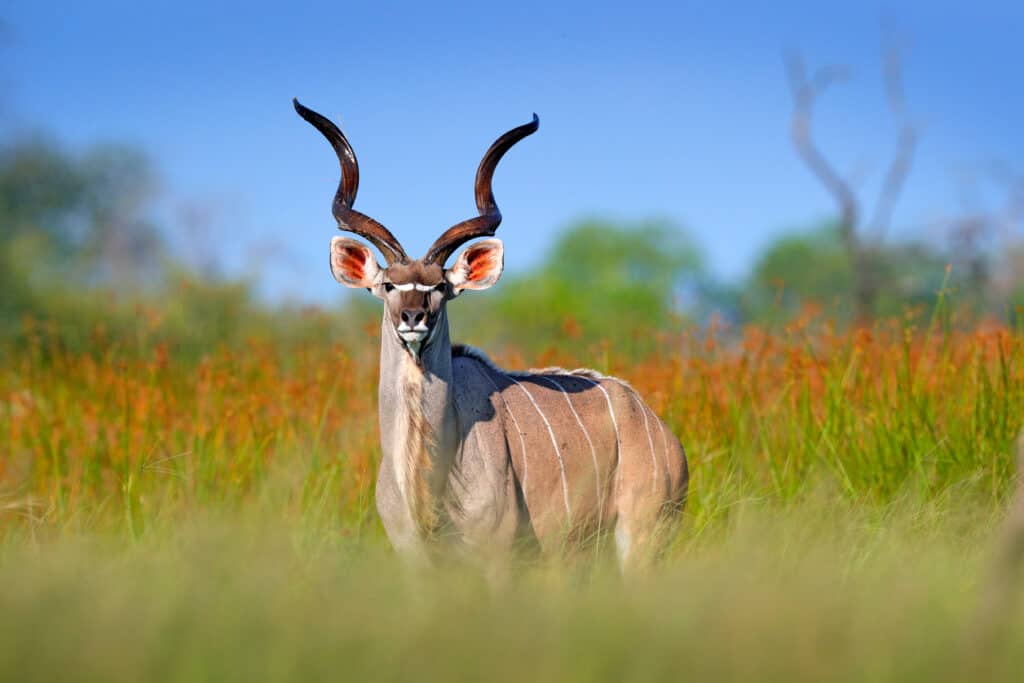
©Ondrej Prosicky/Shutterstock.com
The greater kudu is one of the tallest antelopes in the world.
The greater and lesser kudu are adorned with unique stripes and spots on their bodies, and usually, a white chevron of hair can be found between their eyes.
Males are tall, with a height ranging between 51 to 59 inches, yet they have a narrow build. Females have a more modest average height of around 47 inches.
These African animals with horns find their home in mixed scrub woodlands. Their presence is mainly noted in the southern and eastern parts of Africa, with a thicker population concentration in the south.
Greater kudu enjoy a diet of leaves, flowers, fruits, tubers, and shoots.
Male kudus are renowned for their majestic horns, the largest among antelope species, spiraling up to an astonishing 6 feet. Each horn showcases about 2.5 elegant twists.
Beyond their aesthetic appeal, kudu horns have cultural importance too. They are crafted into musical instruments and, in a specific form, are used as a shofar in Jewish ceremonies.
3. Impala (Aepyceros melampus)
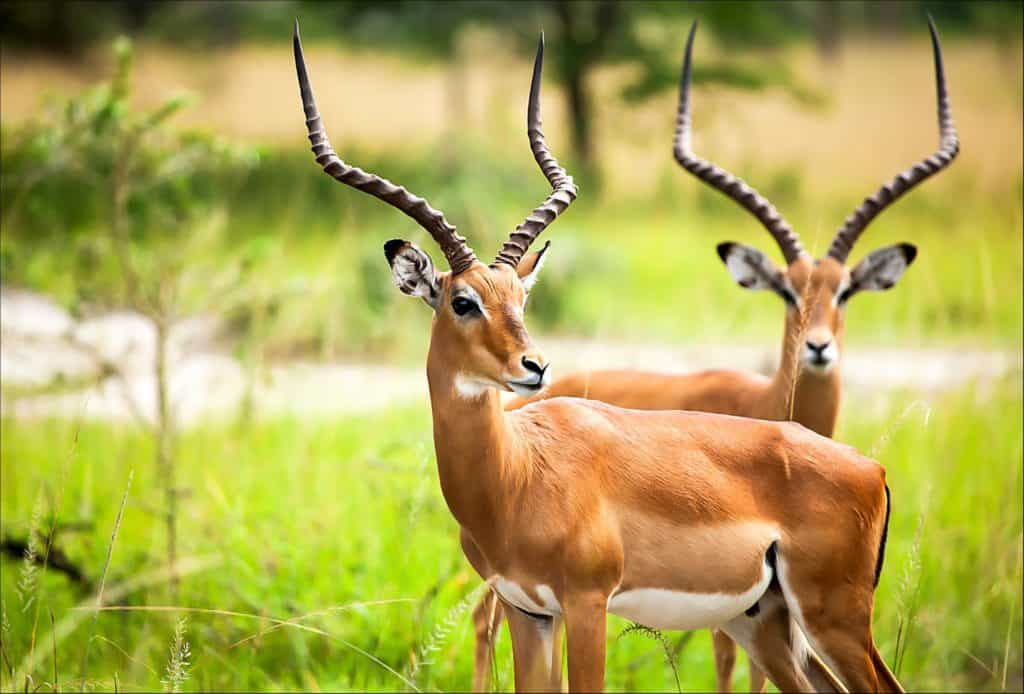
©Lillac/Shutterstock.com
The impala is one of Africa’s most common and graceful antelopes.
Sporting a glossy coat, the impala displays a distinct two-tone coloration – a reddish-brown back complemented by tan flanks, sharply contrasted against a white underbelly. Their facial features include white rings encircling the eyes along with a lighter-hued chin and snout. The tips of their ears are marked with black.
With a height ranging from 28 to 36 inches, impalas are medium-sized antelopes. They roam the light woodlands and savannas of southern and eastern Africa. In the rainy season, when food is readily available, they often assemble in large herds numbering several hundred, grazing on herbs, grasses, bushes, shoots, and shrubs.
These elegant creatures are recognized for their long, spiraled horns, a characteristic of males who utilize them in duels to test each other’s strength. Thanks to these horns that can stretch up to three feet in length, impalas have an effective means of defending themselves. Unlike males, females do not have horns.
4. Springbok (Antidorcas marsupialis)
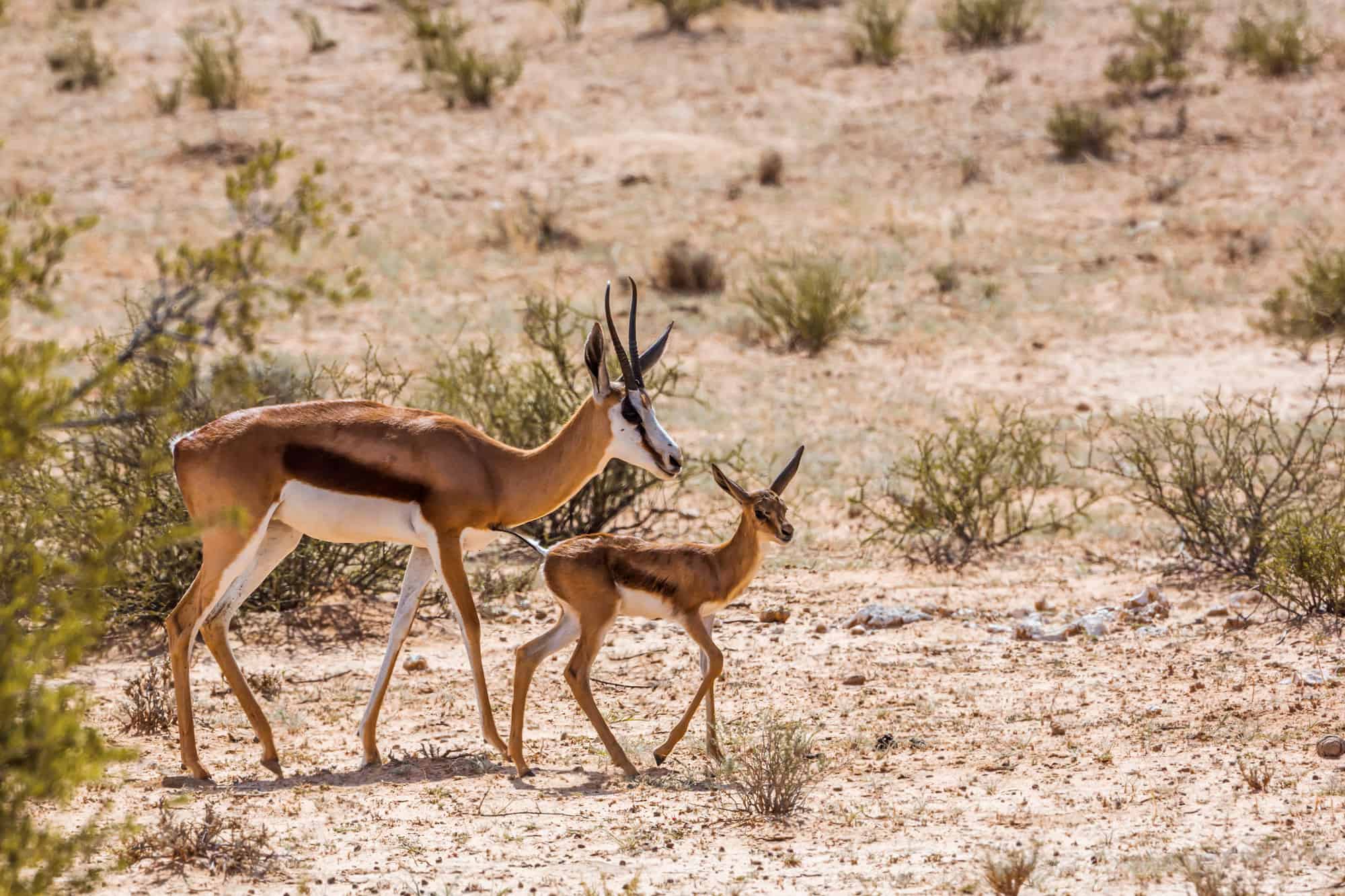
©PACO COMO/Shutterstock.com
Another African animal with horns is the springbok, also known as springbuck.
This medium-sized antelope sports a white face with dark stripes extending from its mouth to the eyes, alongside a reddish-brown coat that transitions to white as it reaches the lower third of its body, ending with a white rear. Both male and female springboks reach a height between 28 to 34 inches at the shoulder.
Their habitat is in the south and southwestern parts of Africa, including regions within Namibia, Angola, Botswana, and South Africa. Springboks like to eat succulent grasses. Their dietary preferences also include shrubs and young succulents.
Both genders are equipped with a pair of black horns, spanning 14 to 20 inches long, arching backward gracefully. Male springboks often use their horns in contests of strength and for control over mating territories. The elegant design of these horns has inspired many African art decor creations, being incorporated into items like lamps and furniture.
5. Giraffe (Giraffa camelopardalis)
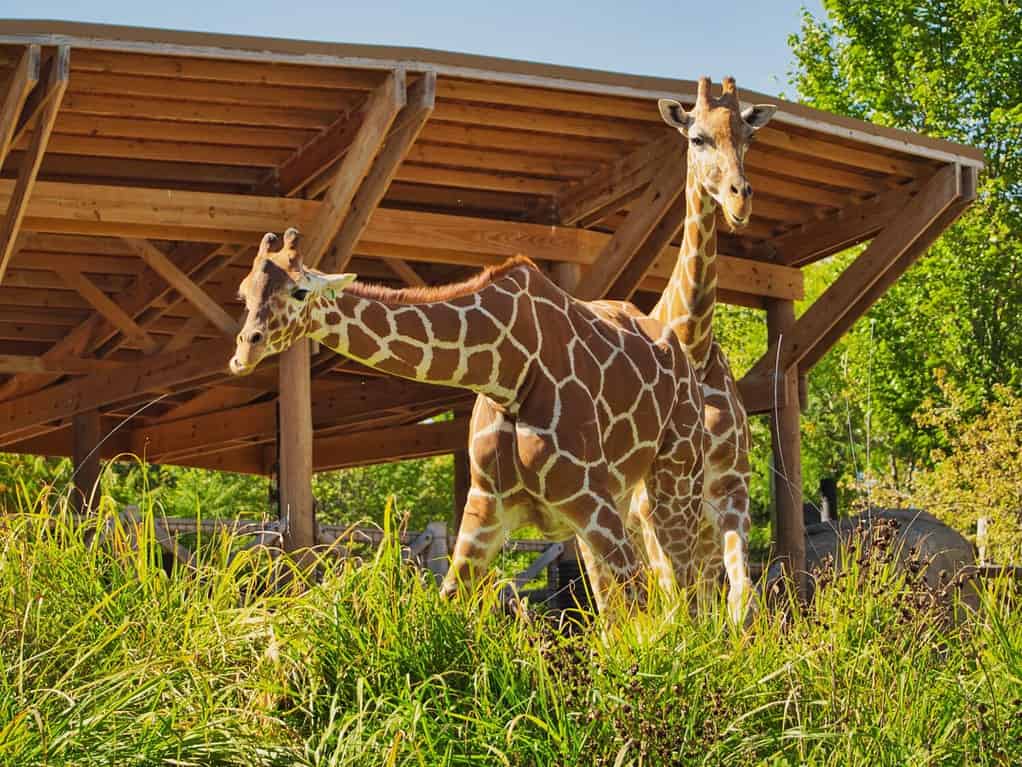
©Wirestock Creators/Shutterstock.com
The giraffe is the tallest land animal in the world. Each of the four giraffe species and their subspecies occupy distinct African geographic regions.
Despite having a short body, giraffes possess exceptionally long legs and necks. Their coats are adorned with a light brown hue embellished with reddish-brown spots. Many of them sport two short horns situated between their ears. With large nostrils, giraffes have a keen sense of smell.
Males typically measure between 16 to 18 feet in height, while females range from 14 to 16 feet.
They find their home in both semi-arid savannahs and savannah woodlands across Africa. With a diet primarily consisting of twigs and leaves from mimosa, acacia, and wild apricot trees, a giraffe usually consumes around 66 pounds of food daily. However, they can get by on as little as 33 pounds.
The horns of a giraffe, referred to as ossicones, are essentially cartilage that has turned into bone or ossified and is enveloped in skin. Both female and male giraffes have ossicones. Giraffes are the only mammals bearing horns right from birth.
6. Common Eland (Taurotragus oryx)
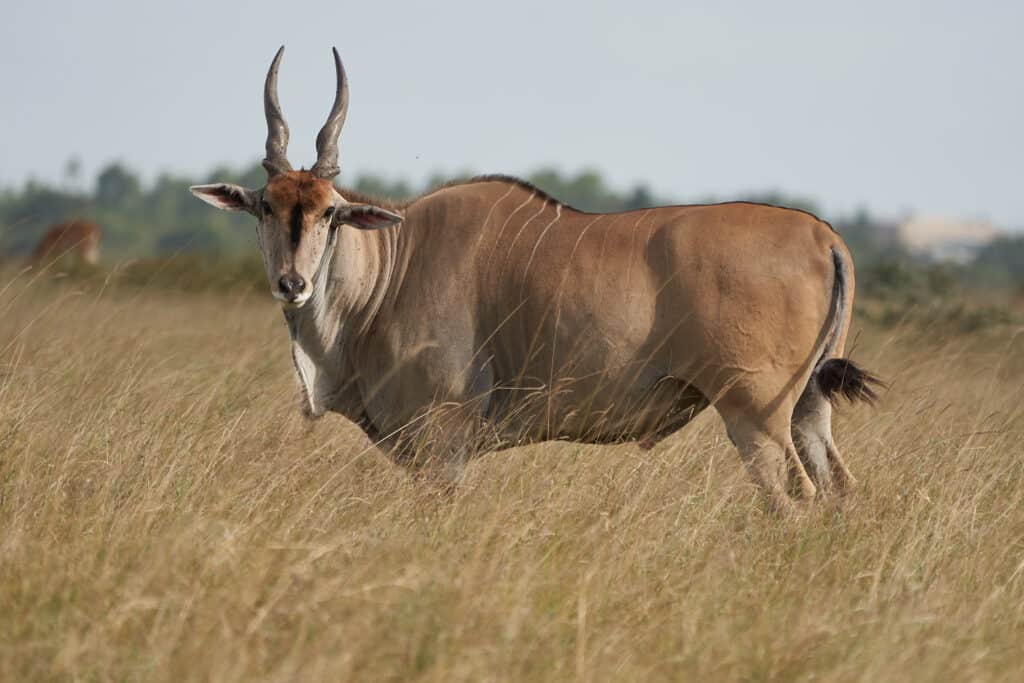
©Rocchas/Shutterstock.com
The common eland is one of two eland subspecies, its counterpart being the giant eland.
Their coat exhibits a geographical variance; in the northern part of their domain, elands bear distinct markings like torso stripes, leg markings, and a spinal crest, which are absent in the south. Besides a rough mane, their coat has a smooth texture. The females have a tan coat, while males flaunt a darker coat with a bluish-gray color.
The common eland is one of the largest antelopes in Africa. An adult male measures around 5.2 feet at the shoulder, with females being slightly shorter.
These elands roam the vast plains of Southern Africa. They primarily feed on a plant-based diet that comprises grasses, seeds, leaves, fruits, and herbs.
Both genders are adorned with straight, twisted horns, though females have thinner, longer, and less spiraled ones compared to males. The horns of male elands can stretch between 1.4 to 2.2 feet, while those of female elands can extend from 1.7 to 2.3 feet.
Male elands have a habit of rubbing their horns against various surfaces and the ground, demonstrating their strength and ferocity. Female elands use their horns to shield their calves from predators.
7. Blue Wildebeest (Connochaetes taurinus)
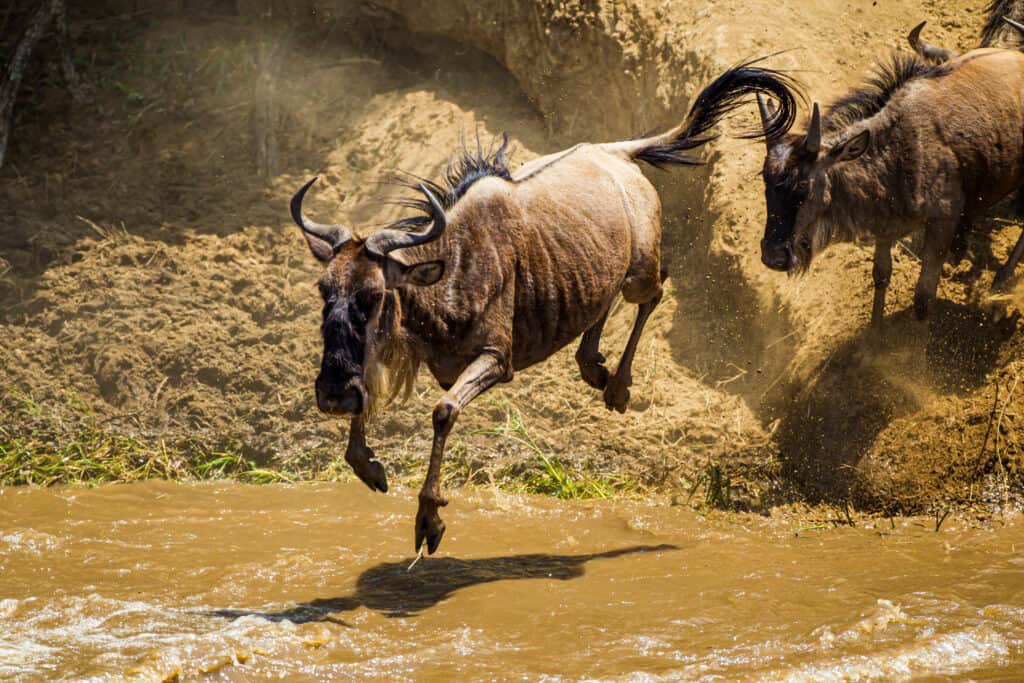
©iStock.com/Wayne Marinovich
In East Africa, the blue wildebeest is the most common big-game species.
Its dark silver-gray body is adorned with dark vertical stripes on the front quarters. A distinguishing feature of the blue wildebeest is its long black mane, accompanied by a beard of hair dangling from its throat and neck. Both male and female wildebeests possess short curved horns.
These horned animals can measure up to 8 feet in length and have a shoulder height of about 4.5 feet.
Their preferred habitats are the short-grass plains adjacent to bush-clad acacia savannas in the southern and eastern regions of Africa. These animals flourish in environments that strike a balance between being overly wet or dry. Being herbivores, blue wildebeests primarily graze on the short grasses, which are common on light and alkaline soils.
Their horns extend sideways and have a slight inward curve at the tips. Unlike some other horned species, their horns lack ridges. While female horns can grow up to 1.3 feet, male horns can reach a length of 2.7 feet. Since males with territory have exclusive access to breeding females, they employ their horns during shoving contests and territorial disputes.
8. Saharan Horned Viper (Cerastes cerastes)
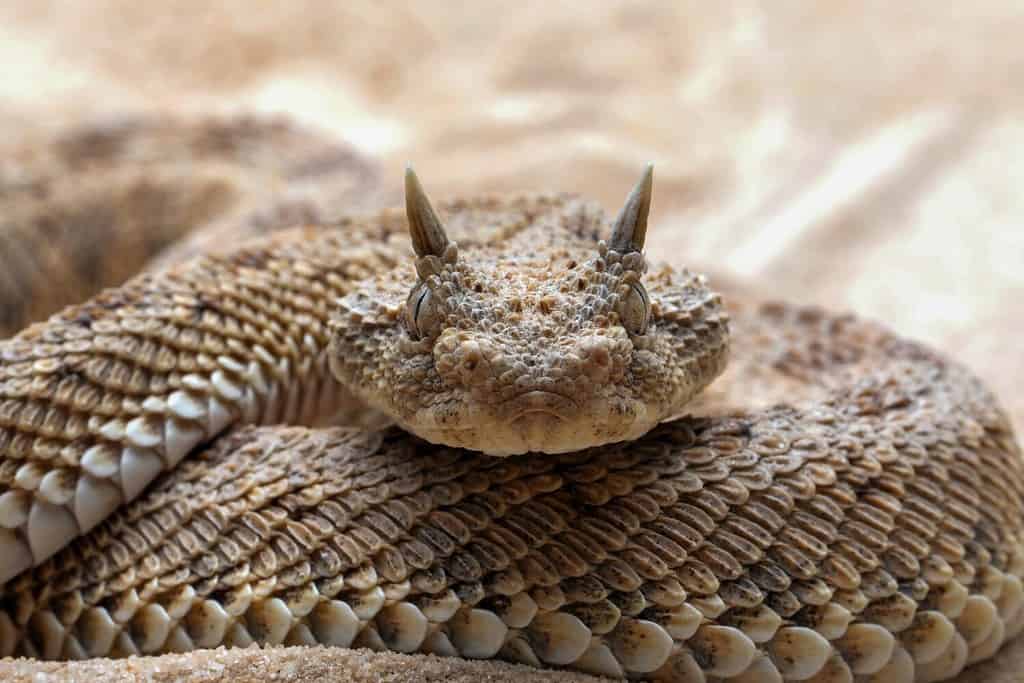
©Lauren Suryanata/Shutterstock.com
It might come as a surprise to find a snake on the list of horned African animals, but it’s a fact!
Male Saharan horned vipers have larger heads and eyes than females, with their coloration blending well with the environment. The back of the snake displays dark, semi-rectangular markings which may or may not resemble crossbars. Sporting a white belly, the snake’s tail is usually thin and might have a black tip.
On average, the combined length of the body and tail ranges from 12 to 24 inches, with females being larger than males.
Spread across the Sahara in Northern Africa, this unique snake dwells in diverse desert environments, including rocky hills and sandy expanses. Saharan horned vipers are carnivorous creatures. Their typical meals primarily include lizards, though they won’t shy away from small rodents and birds.
One of the standout features of the Saharan horned viper is the pair of supraorbital “horns,” one situated above each eye. These horns can vary in size or may even be absent. Their function is to shield the eyes from the unforgiving desert elements, particularly wind-blown sand.
9. Nubian Ibex (Capra nubiana)
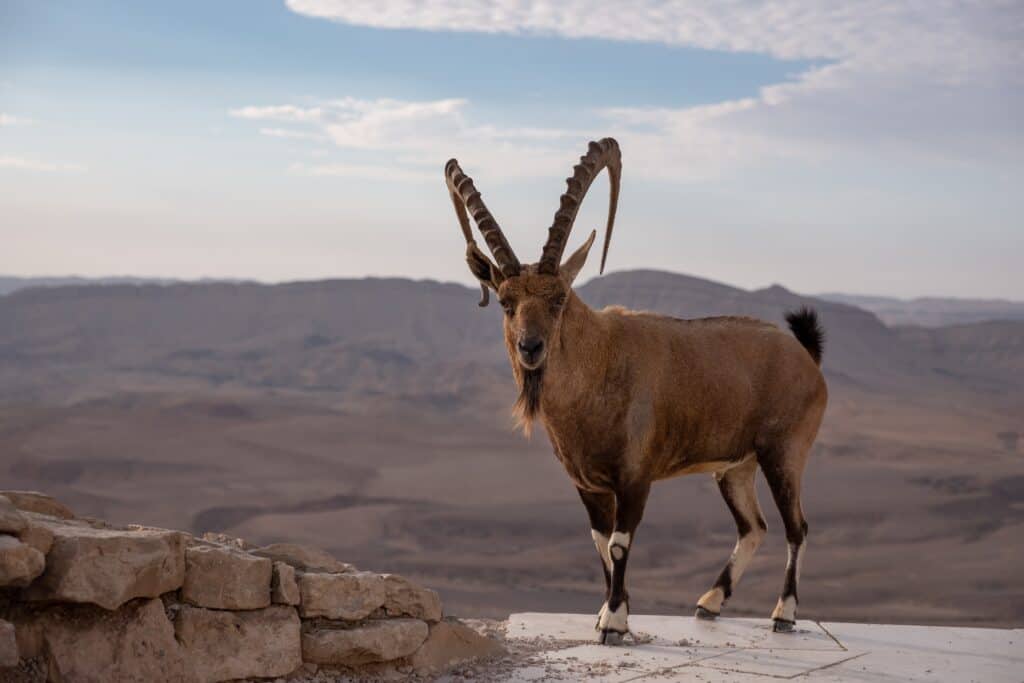
©A.Pushkin/Shutterstock.com
The Nubian ibex, one of Africa’s smaller ibex species, sports a light tan shade contrasted by a white belly. Males have a dark brown stripe running down their backs. These creatures exhibit long, slender horns that curve upward, then backward and downward. Standing at a height of around 25 to 30 inches at the shoulder, males tend to be larger than females.
These ibexes thrive on rocky desert mountains characterized by steep slopes and extend to nearby hills, plateaus, canyons, and wadis. Their territory spans across the mountainous regions of northern and northeastern Africa, as well as parts of the Middle East.
Their dietary preference leans towards grasses and leaves, with a special liking for Acacia tree leaves.
Male Nubian ibexes have large, dark, semi-circular horns adorned with annual rings. The growth of their horns is notable, extending 4.5 to 8 inches during the first five years, and following that, there is an annual growth of 0.7 to 1.5 inches. The male’s impressive horn length, which can span up to 4 feet, serves dual purposes – as a defensive mechanism and a way to charm females.
10. Hartebeest (Alcelaphus buselaphus)
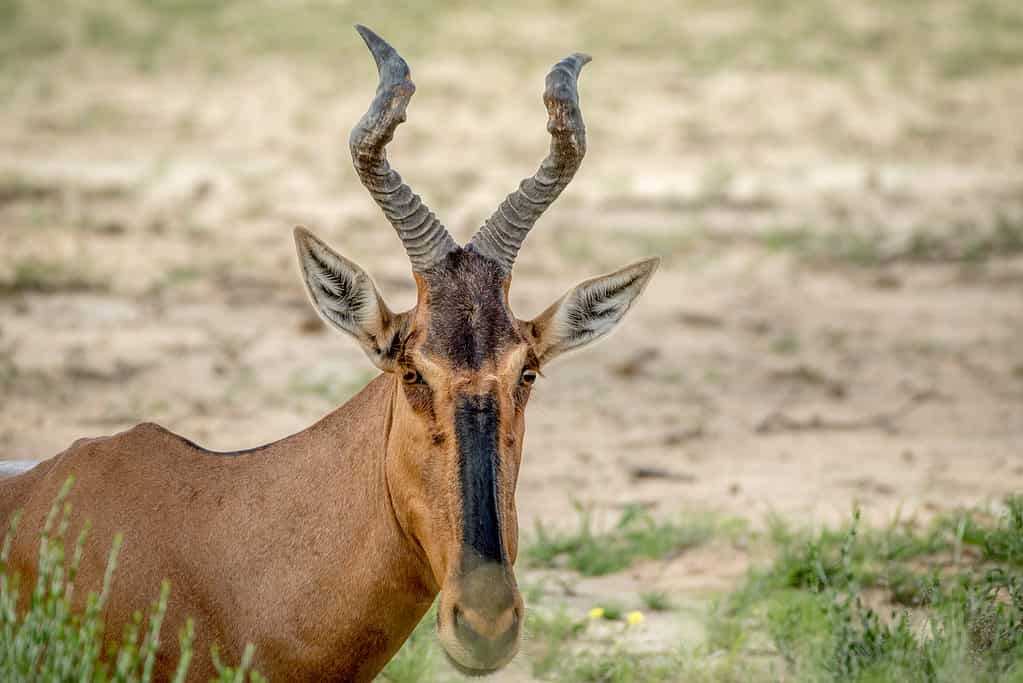
©Simon Eeman/Shutterstock.com
The hartebeest, also referred to as kongoni or kaama, is a notable African antelope.
Exhibiting a large frame, this antelope is recognized for its fawn color. It bears unique features, including a sharply sloped back, extended legs, and a long snout, which, despite giving an awkward appearance, contribute to its elegance, matching or even surpassing other antelopes.
Typically, a hartebeest measures just over 3 feet 3 inches at the shoulder, with a head-and-body length ranging from 6.5 to 8.2 feet.
These antelopes dwell in dry savannas, open plains, and wooded grasslands, often migrating to drier regions post-rainfall. They can also climb as high as 13,000 feet on Mount Kenya. Their diet is mainly comprised of grass, showing a remarkable tolerance towards low-quality food and showcasing a non-selective feeding behavior.
Both male and female hartebeests have horns, although females have more slender ones. These horns can extend between 18 to 28 inches in length. The primary function of their horns is to deter predators. However, during the breeding season, male hartebeests also utilize their horns to assert dominance and secure a favorable position for mating.
11. Jackson’s Chameleon (Trioceros jacksonii)
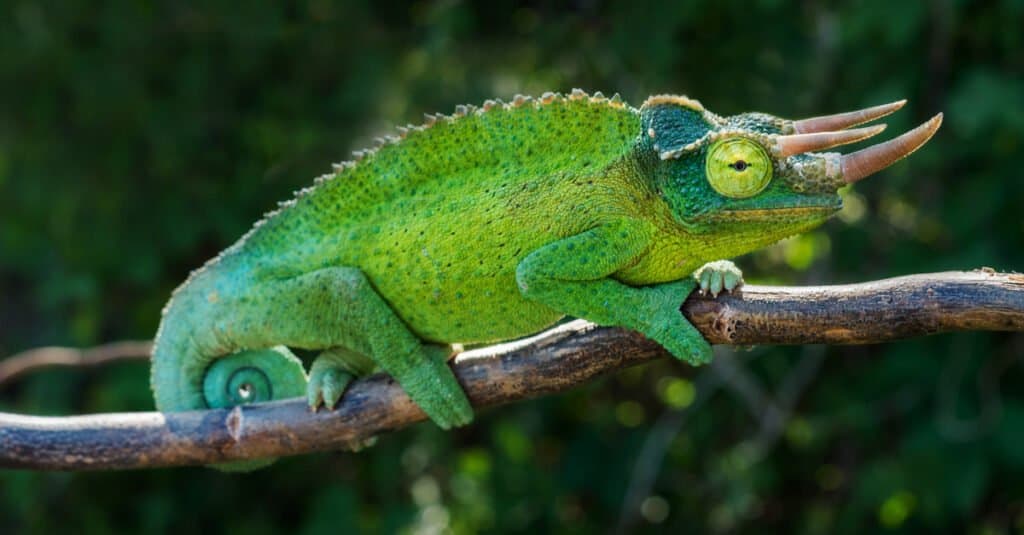
©Jan Bures/Shutterstock.com
It’s unexpected but true: a chameleon makes the list of horned animals from Africa. The Jackson’s chameleon is native to the eastern part of the continent.
These creatures often display a radiant green color, with a few showcasing hints of blue and yellow. But, being chameleons, their colors can change rapidly in response to their emotions, health status, and environmental temperatures. Distinguishing features of Jackson’s chameleon include a dorsal ridge with a saw-tooth appearance and an absence of a gular crest.
Male Jackson’s chameleons can reach about 13 inches in length, nearly half of which is contributed by their adaptable tail. In contrast, females are significantly smaller, averaging around 9 inches.
The Jackson’s chameleon thrives in the mountainous regions of East Africa, notably in Tanzania and Kenya. They usually live high up in the trees within mountain rainforests, venturing to the ground primarily for mating and egg-laying activities. Their dietary preference leans towards insects, making them insectivorous creatures.
An intriguing aspect is that only the males sport horns. They have three horns, giving them a mini triceratops-like appearance. This has also earned them the alternative name of “3-horned chameleons.” Male chameleons engage in horn-locking duels, attempting to push each other off narrow branches to assert dominance and secure their territory.
12. Lechwe (Kobus leche)
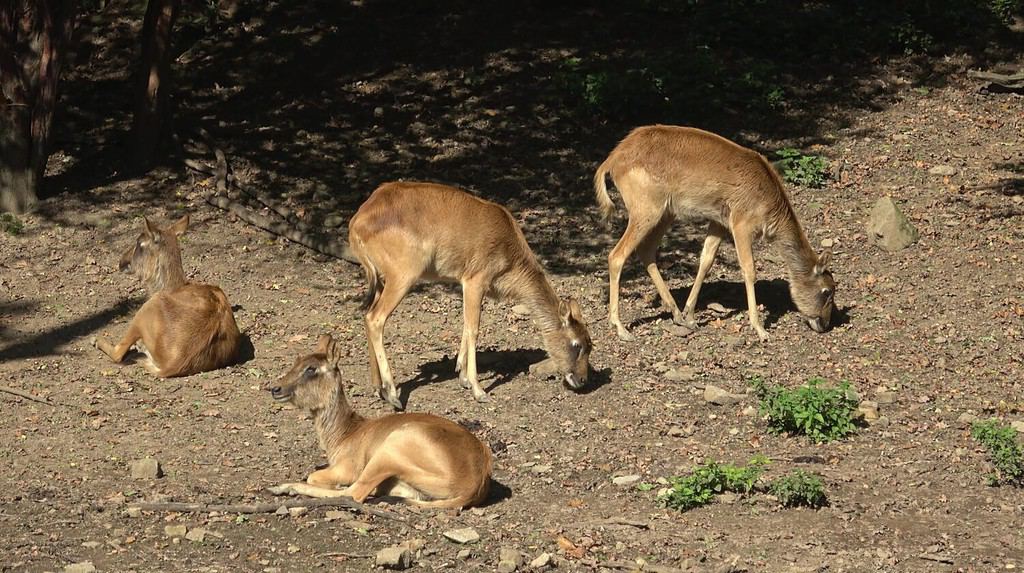
©Kardaska/Shutterstock.com
Our final highlighted African animal with horns is the lechwe. Living in the wetlands and floodplains of southern Africa, the lechwe is a medium-sized antelope that exhibits interesting adaptations to their aquatic habitats.
Lechwe’s most notable feature is their striking chestnut-brown coat, which contrasts sharply with a white underbelly. This unique coloration helps them blend in with the surrounding reeds and aquatic vegetation. Their slender bodies and long legs are well-suited for navigating the marshy terrain.
Standing at an average height of 3 to 4 feet at the shoulder, lechwe are superb swimmers and can run gracefully through water. Lechwe are herbivores, primarily grazing on aquatic plants such as sedges, grasses, and reeds. Their diet is specially adapted to their watery environment, and they often wade into knee-deep water to access their food. They will also wade into the water to protect themselves from predators. Interestingly, their legs are covered in a water-repelling substance.
Both male and female lechwes have impressive horns, with males boasting slightly larger and more robust horns. These horns can reach lengths of up to 18 to 35 inches. Their horn structure adds to their distinctive appearance and serves various purposes, from defense to asserting dominance within their herds.
Comprehensive List of All African Animals With Horns
- Gemsbok
- Greater Kudu
- Impala
- Springbok
- Giraffe
- Common Eland
- Blue Wildebeest
- Saharan Horned Viper
- Nubian Ibex
- Hartebeest
- Jackson’s Chameleon
- Lechwe
- Dik-dik
- Giant Eland
- Gazelle
- Blesbok
- Sable Antelope
- Black Wildebeest
- Saiga Antelope
- East African Oryx
- Ankole-Watusi
- Bongo
- Addax
- Nyala
- Royal Antelope
- Waterbuck
- Roan Antelope
- Rhinoceros
- Spiral Horned Antelope
- Spiral Horned Bovines
- Forest Buffalo
- Cape Buffalo
- West African Savanna Buffalo
- Central African Buffalo
- East African Oryx
- Scimitar-Horned Oryx
- Bushbuck
- Gerenuk
- Topi
- Bontebok
- Lesser Kudu
- Sitatunga
- Roan Antelope
- Barbary Sheep
- Steenbok
- Klipspringer
- Oribi
- Reedbuck
- Duiker
- Suni
- Tsessebe
- Puku
- Kob
- Pygmy Goat
- Somali Sheep
- Grey Rhebuck
- Beira
Summary of the Complete List of 57 African Animals With Horns
| Number | Animal | Scientific Name |
|---|---|---|
| 1 | Gemsbok | Oryx gazella |
| 2 | Greater Kudu | Tragelaphus strepsiceros |
| 3 | Impala | Aepyceros melampus |
| 4 | Springbok | Antidorcas marsupialis |
| 5 | Giraffe | Giraffa camelopardalis |
| 6 | Common Eland | Taurotragus oryx |
| 7 | Blue Wildebeest | Connochaetes taurinus |
| 8 | Saharan Horned Viper | Cerastes cerastes |
| 9 | Nubian Ibex | Capra nubiana |
| 10 | Hartebeest | Alcelaphus buselaphus |
| 11 | Jackson’s Chameleon | Trioceros jacksonii |
| 12 | Lechwe | Kobus leche |
